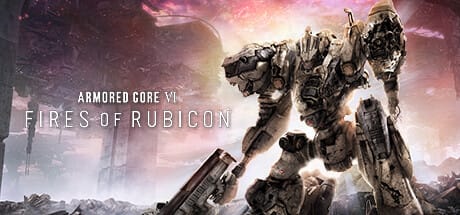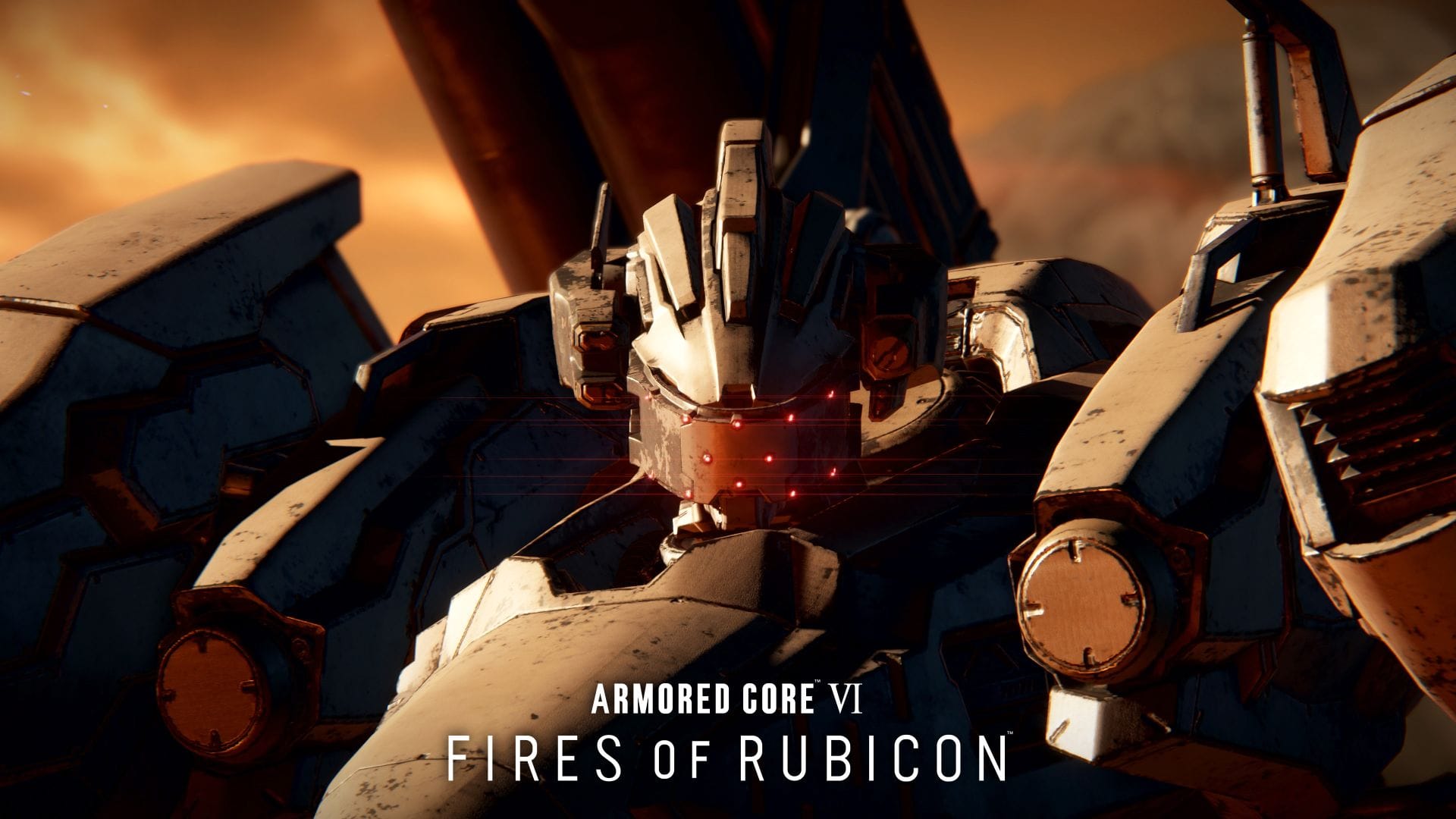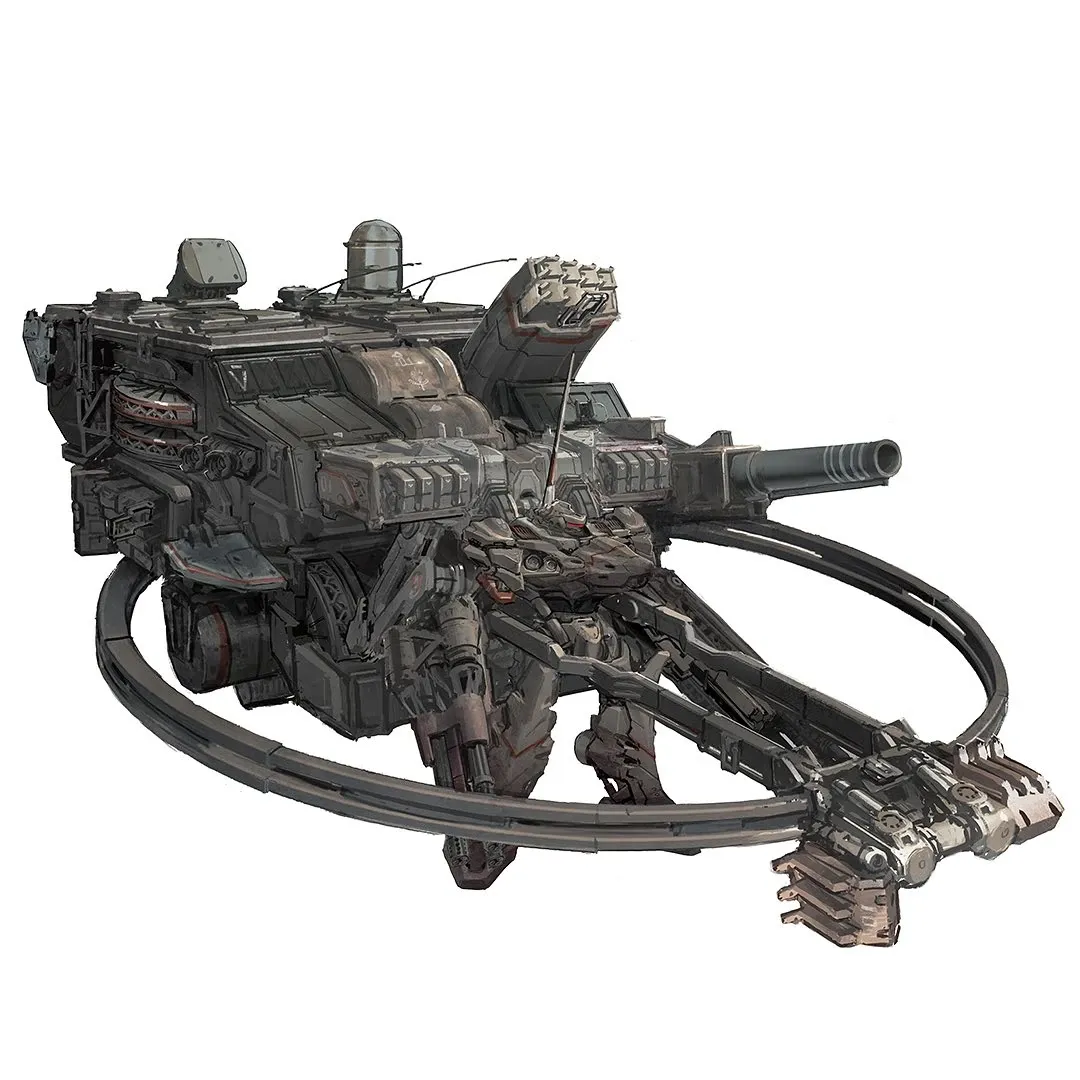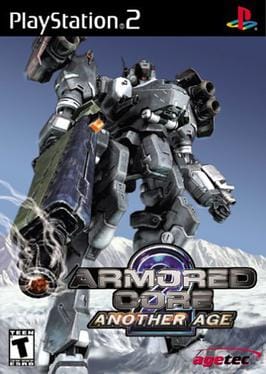Armored Core 6: Fires of Rubicon

Raven Flies Again
I can't explain how I felt coming back to this series after over half a lifetime at this point. When I was younger I had a a next door neighbor who baked for her living, and she'd occasionally have her nephew over. He was older than me, but enjoyed playing video games. I adored those weeks he was in town and we'd deep dive on some game. The one I link to him the most is Armored Core 2: Another Age. We would make giant robots together, duke it out in the arena, and enjoy our time together talking about laser swords, tank legs, and more.
The other weird part of AC2:AA is that it's a Japanese style expansion, by which I mean it's a fully stand alone game that is a partial sequel to another game. In the US, generally "Expansion Pack" in gaming are DLC style ones, where is modifies the original game to be a new version. In Japan, the arcade scene was much harder to do these sorts of updates with, so they would roll out new cabinets when they needed to release a new Street Fighter or other game. Hence, what I call a Japanese style expansion: A fully released version of the game that is based off a previous version. These would usually let you port over the data from the first game and let you continue where you left off, but having only owned AC2:AA, I didn't know what any of this was back when I was a kid, I just knew the giant robot fighting game had a weird subtitle.
A final oddity with Armored Core is the studio that develops the series is called FromSoftware, or Fromsoft, the people behind DARK SOULS and ELDEN RING. In the PS2 era and before they were mostly known for weird little games, like King's Field, Lost Kingdoms, or another game I owned, Eternal Ring. They mostly tried their hand at super complex, self contained games that wouldn't win over the broader gaming audience but would earn a super dedicated fan base. Armored Core is a series that kept them going, providing some incredible Giant Robot based game play that really felt like you were destroying buildings and zooming around at high speeds. I am an avid fan of the SOULS series of games, getting the original Demon's Souls on release, bouncing off it, and only beating it in 2011 when DARK SOULS was about to be released. I remember challenging a gamer roommate of mine that he couldn't beat it, that it was the most difficult game I owned, and that doomed the both of us.
Flash forward to now, and I get notified that Armored Core 6 is released. I wait as long as I can for a sale and scoop it up in February 2024. I turn on the game, do the opening tutorial mission without a hitch, which is flying around trying to find a working license. Upon discovering one that will work, you steal the title RAVEN, one that instantly sent me back in time, since this is the title of every Armored Core protagonist in one way or another. That's when my cynical attitude cracked at last and I fell deeply in love with the story of Rubicon.
Analysis Level 1: Merc in the Middle

Let us start with a brief overview of the narrative of Fires of Rubicon before we really get into analysis. Rubicon has a resource known as Coral, which is more or less sentient oil. The role of the player is 621, AKA Raven, an augmented human who sneaks into Rubicon and works as a mercenary. You bounce between the Balam group and the Arquebus group, doing jobs for both sides, trying to put down the Rubiconian Liberation Front before also taking jobs for them. A man named Handler Walter is one of the few characters known to you at this point, and he's the voice who gives you missions. You never see a single human in this game, it's all disembodied voices or people piloting robots, and yet it doesn't feel isolating. You slowly build up your reputation until you hit the end of the first chapter, where you get caught in an explosion and are paired with a voice in your head named Ayre.
From here there are multiple paths to take, many mysteries to uncover, and the player gets to decide how they leave their mark on the world. Do you want to keep working with the corporations, regardless of the damage they're doing to the planet and the coral? Do you want to learn more about why there is a Rubiconian Liberation Front? Do you know what's up with The Arena, as well as ALLMIND, the AI who runs the arena? What is the Rubiconian Institute, and why did they manufacture so many defensive weapons?
This being a FromSoft game, many of these answers are found by taking out your shiny golden shovel and getting to work. You have to dig through logs, play the game at least 3 times fully to unlock all the endings, and really just continue to immerse yourself into the world of Armored Core to crack the bone and suck the marrow. Every time you blast through the game, you pick up more stuff, like how you're given the title Gun 13 by the Redguns, only to discover the number is cursed by their recruits as a deathmark, pilots G13 never lasting very long. Another note is how different companies name their AC parts, ranging from the Schnider parts being named after birds to DA FENG parts being named after constellations. These little details picked up along the way always paint a smile on my face and is a trademark of FromSoft's design sensibilities: Always put meaning into every part of your game.
Analysis Level 2: Bullet Hell

Gameplay for Armored Core 6 is split between designing your giant robot and piloting your giant robot. The garage portion of the game is about tweaking the performance of your machine: Am I making a tank treaded weapons platform? What if I make the lightest playable AC? What about a quad-leg hover capable flier? There are so many small decisions that every player musk ask themselves, and every mission gives different variables. If you take an AC into a level and die, you're allowed to tweak your design and bring it back into the fight. At first the statistics are overwhelming, but the greatest advice I heard was "Just choose all matching parts and then tweak it from there." Your AC has four weapon slots, which are assigned to your four triggers on the controller. Later on you get the ability to fill a shoulder slot with another hand slot weapon, which opens up your customization even more. The core machine is arms, legs, torso, and head. Finally there are the internals, the Generator, FCS(Fire Control System), and Boosters. The combination of all your parts is what you'll take out into the field, and the more one gets stuck in the hangar, the more it seems like one will never fly.
And thus, how does flying feel? Incredible, but only if you're light enough for it. The piloting of one's machine is hectic and violent, each mission ramping up what it asks of you until you're dodging missiles and gunfire as an afterthought. Heavy machines tend to just soak up the damage and deal it out in greater increments, winning through sheer damage output. I personally leaned to a machine with high thrust values, that way when you're locked onto a target and circling them none of their projectiles can even travel fast enough to hit you, they're always blowing up dust where you were. Add in a pair of shotguns, an FCS capable of locking on very quickly at short ranges, and a pair of pistols to chip away at their stability to make an opening. This game is made by FromSoftware, and they took lessons learned from other games and implemented them here. Sekiro's stagger system is more or less taken, adapted, and executed for great effect, letting you do significant damage by hammering into your opponent until their guard breaks.
These two systems volley back and forth, breaking up the gameplay and allows one to play for hours on end without getting tired of the loop. Frustrated, sure, but never feeling bored with the game. Every mission earns the player credits which can be taken to the shop to unlock new parts, which makes surviving a particularly grueling mission feel even better when you know you can get those cool arms that you had your eye on now. Replaying levels is also supported, giving your character more cash, new chances to pick up battle logs(which unlocks hidden parts), and a ranking (which you can go for a full S challenge after completing all missions.) This means, after three full playthroughs, there are still things for me to do in this massive game.
Analysis Level 3: Synthesis

I'm trying to write postmortems of games I play in order to get a bit more out of them than just entertainment. I believe all the media we consume becomes a part of us, and we read into them on multiple levels. I have been unemployed for about six months now, and that gives me a unique lens on this game that will make it stick to the core of me. The protagonist is an unnamed human who is forced into conflict by powers outside of their control. They proceed to do as they're told, the few people in their life using them as a tool and not giving the pilot much agency. The pilot is exposed to a new perspective in a new contact, and from there they make choices to take their life back from the mindless work by expressing their will. To me, this was the story of being put into a new context and being forced to adapt. It is about accepting the reality of the position you are put into and moving forward despite that.
Every piece of media is tinged with what you were experiencing in your life at the time. I can't ever see Shazam 2 in the same way because at the climax of that film I got into a huge fight with my family. I will always connect The Dark is Rising to me crying in my bed, thinking about a dog dying for the first time. Armored Core 2 sends me back with my neighbor PJ, it conjures muggy summer days and my most recent memory of him smoking a cigar driving us from PAX East. Armored Core 6 will send me to this time, the daily sending of applications into a mute void with an occasional response; feeling like all of the work I'm doing is not being noticed or changing my material reality. The helplessness of that starting point in AC6 and the slow acquisition of skills, knowledge, and experience until finally one becomes the expert. It was very useful to put my life into perspective with a video game: As long and I keep working towards my goal I will eventually achieve it despite my feelings otherwise.
And thus, I continue to write, I continue to cook (which I'll share on here eventually), and I'll continue living my life. Life never stops, and even if it feels like we're stuck at times there is always a way to continue on. Be it a programmer on earth, a generation 4 humanoid on Rubicon, or something else entirely, we keep going on and making choices based on our experience. There is always something to be gleaned from our experiences, either personally attained or curated by a game development studio or filmed by a small country of workers. Interactive art is just as impactful as film, literature, graphic novels, podcasts, or anything else humans do to feel a connection or to simply be entertained. In the end, we're just sentient beings trapped in a rig of sorts, trying to find meaning in the strangeness that is our world.